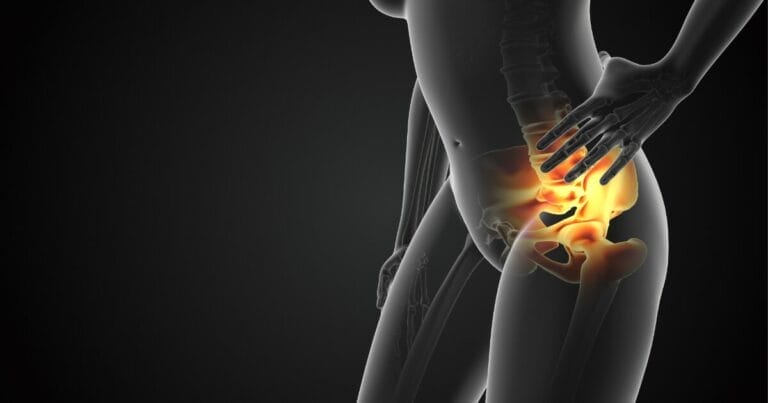Top 3 Bladder Control Fixes Without Surgery
Urinary incontinence affects countless people and can really disrupt daily life. While some might consider surgery, it’s not the only way to improve bladder control. Here, we’re going to talk about three effective, non-surgical methods that can help. These approaches can give you back control and improve your life without the need for an operation….

Urinary incontinence affects countless people and can really disrupt daily life. While some might consider surgery, it’s not the only way to improve bladder control. Here, we’re going to talk about three effective, non-surgical methods that can help. These approaches can give you back control and improve your life without the need for an operation. If you’re dealing with this issue and looking for relief, keep reading to learn about some key strategies that could work for you.
Many people suffer from urinary incontinence, but not everyone wants to undergo surgery. Thankfully, there are non-surgical options to help manage this condition. We’re going to cover three of the best methods that can help improve bladder control. These solutions are practical, less invasive, and can help enhance your quality of life. For anyone seeking alternatives to surgery for urinary incontinence, the information ahead might be just what you need.
Three Non-Surgical Ways to Improve Bladder Control
- Pelvic Floor Exercises: Strengthening the muscles in your pelvic floor can help you get better control over your bladder. These exercises, often called Kegels, are simple to do and can be very effective.
- Bladder Training: This involves learning to delay going to the bathroom when you feel the urge. Gradually, it can increase your bladder capacity and control.
- Diet and Lifestyle Changes: What you eat and drink can affect your bladder. Reducing caffeine and alcohol, maintaining a healthy weight, and quitting smoking can all make a big difference.
By trying these methods, many have seen improvements in their bladder control. It’s about finding what works for you and sticking with it.
‘Regaining your confidence after struggling with urinary incontinence can be life-changing. These non-surgical methods are not only effective but also empower individuals to take control of their health in a proactive way,’ says Dr. Jane Smith, a urology expert.
Remember that while these tips can be helpful, it’s always best to consult with a healthcare professional before starting any new treatment.
Key Takeaways
- Pelvic floor exercises, also known as Kegels, are a non-surgical method to improve bladder control.
- Bladder training can increase bladder capacity and control by learning to delay going to the bathroom when feeling the urge.
- Diet and lifestyle changes, such as reducing caffeine and alcohol intake, maintaining a healthy weight, and quitting smoking, can make a significant difference in bladder control.
- Behavioral therapies, like pelvic floor exercises and bladder training, along with medical devices, can effectively manage urinary incontinence without surgery.
Understanding Urinary Incontinence
Urinary incontinence is a common condition characterized by the involuntary loss of bladder control. It affects millions of people worldwide, and its causes can vary. Some common causes of urinary incontinence include weakened pelvic floor muscles, nerve damage, and certain medical conditions such as diabetes and urinary tract infections. Additionally, hormonal changes during menopause can also contribute to urinary incontinence in women.
When it comes to non-surgical treatment options for urinary incontinence, there are several approaches that can be effective. Behavioral therapies, such as bladder training and pelvic floor exercises, can help improve bladder control. Medications, such as anticholinergics, can also be prescribed to reduce overactive bladder symptoms. In some cases, medical devices like pessaries or urethral inserts may be recommended to provide additional support to the bladder.
Pelvic Floor Muscle Training
Pelvic floor muscle training offers a practical and non-invasive way to help people with urinary incontinence gain better bladder control. This method focuses on strengthening the muscles that play a key role in bladder function through exercises called Kegels. By consistently doing these exercises, individuals can fortify their pelvic floor muscles which can lead to improved urinary control.
Kegel exercises are about tightening and then releasing the pelvic floor muscles over and over. What’s great about them is they’re subtle and can be done at any time, fitting easily into a daily schedule. For those who find it tricky to pinpoint the right muscles to exercise, biofeedback training is a helpful option. This approach uses monitoring devices that give feedback through either visual or sound signals to aid individuals in correctly exercising their pelvic floor muscles.
Evidence supports that pelvic floor muscle training can make a real difference in reducing urinary incontinence symptoms and enhancing bladder management. It’s a reliable choice for those who are looking for non-surgical methods to tackle bladder control problems.
Train Your Pelvic Floor Muscles
Are you struggling with bladder control? Pelvic floor muscle training could be the key to improvement. These simple exercises, known as Kegels, target the muscles that you need to strengthen for better bladder function. And the good news is, you can do them anywhere, anytime.
Having trouble finding those pelvic floor muscles? Biofeedback training might be the solution. It’s a user-friendly technique that uses sensors to guide you in exercising the right muscles effectively.
People who have incorporated pelvic floor muscle training into their routine have seen substantial progress in managing urinary incontinence. It’s a trusted and non-invasive option that could lead to significant improvements in your quality of life.
Custom Quote: ‘Empower your body with pelvic floor muscle training and take control of your bladder health.’
Bladder Training Strategies
Bladder Training Strategies
Managing Fluid Intake:
To keep your bladder healthy, watch the amount of liquid you drink. Stay hydrated without going overboard, especially with drinks like caffeine and alcohol that can upset your bladder.
Changing Habits:
Try to extend the time between bathroom trips. Set a schedule to use the bathroom at certain times, which can prevent urgency. Also, after going once, try to go again a few minutes later to make sure your bladder is really empty. If you feel the urge to go, see if you can wait a little longer each time.
Strengthening Exercises:
Strengthen your bladder muscles with specific exercises. For example, Kegel exercises work out your pelvic floor muscles, which support your bladder. Some people use biofeedback therapy, which shows how these muscles are working, to get better at controlling them.
Remember, it’s about finding what works for you and sticking to it. For example, ‘I found that doing Kegel exercises during my morning routine really helped my bladder control. It’s like hitting two birds with one stone – I get energized for the day and improve my health at the same time!’
Keep these tips in mind, and you might just find relief and better bladder control.
Frequently Asked Questions
What Are the Common Causes of Urinary Incontinence?
Urinary incontinence can stem from several causes, including weak pelvic floor muscles or certain lifestyle habits. To improve bladder control, it’s often advised to strengthen these muscles through targeted exercises and to adjust lifestyle habits that may be contributing to the issue.
Weak pelvic floor muscles can lead to a lack of support for the bladder and urethra, which is why exercises designed to strengthen these muscles, known as Kegels, are frequently recommended. They involve contracting and relaxing the muscles that control urine flow and, when performed regularly, can significantly improve urinary control.
Lifestyle factors can also play a role in urinary incontinence. For example, excessive caffeine or alcohol intake can increase urine production and exacerbate symptoms, while being overweight can put extra pressure on the bladder. Making changes such as reducing caffeine and alcohol, maintaining a healthy weight, and quitting smoking if applicable, can help alleviate symptoms.
Remember, it’s not just about stating that these changes are beneficial; it’s about understanding that they can lead to a better quality of life by reducing the frequency and severity of urinary incontinence episodes.
When transitioning between ideas, it’s important to do so smoothly. For example, after discussing lifestyle adjustments, we can naturally segue into the importance of staying hydrated and how it can impact bladder health.
In writing, it’s essential to use clear and simple language to ensure that the information is accessible to everyone. Avoid overcomplicated terms and focus on providing valuable insights and practical advice.
Here’s a custom quote to consider: “Taking control of urinary incontinence starts with understanding its causes and actively pursuing the right changes—both in our daily habits and with targeted exercises.”
Remember to maintain a conversational tone throughout, as if speaking directly to the reader, which can make the information more relatable and easier to digest. This approach encourages readers to take positive steps towards managing their urinary incontinence with confidence and knowledge.
Are There Any Medications Available for Treating Urinary Incontinence?
Several medications can help manage urinary incontinence, such as anticholinergics, alpha-adrenergic agonists, and B3-adrenergic agonists. But it’s not just about taking pills. People should also discuss other possible treatments with their doctors to find the best strategy for their situation.
With advances in medicine and a better understanding of the human body, treatments for conditions like urinary incontinence are always improving. Medications can reduce symptoms for many, but they’re not the only option. Lifestyle changes, physical therapy, or even surgery might be more appropriate, depending on individual circumstances.
For instance, someone might be prescribed a medication like oxybutynin, which relaxes the bladder muscle, or mirabegron, which targets the B3 receptors to improve bladder capacity. Yet another patient might find pelvic floor exercises (Kegels) or bladder training more beneficial.
It’s also worth noting that managing fluid intake, avoiding irritants like caffeine and alcohol, and maintaining a healthy weight can make a significant difference for some people. Each person’s experience with urinary incontinence is unique, so the treatment must be personalized.
When seeking medical advice, remember to discuss all symptoms, lifestyle factors, and personal preferences. A tailored approach can lead to better outcomes and improve quality of life.
Custom Quote: “Finding the right treatment for urinary incontinence can be life-changing. It’s about matching personal needs with medical expertise to regain control and comfort.”
Can Urinary Incontinence Be Completely Cured With Non-Surgical Methods?
Urinary incontinence is a common issue, and while non-surgical treatments may not promise a total fix, they can significantly improve bladder control. Many people find relief through natural approaches, strengthening the muscles of the pelvic floor, and adjusting daily habits.
Natural remedies might include dietary changes, like reducing caffeine and alcohol, which can irritate the bladder. Pelvic floor exercises, also known as Kegel exercises, are particularly beneficial. They involve tightening and releasing the muscles that support the bladder to build strength over time. Additionally, changes in behavior, such as scheduled bathroom trips and bladder training, can help the body regain control.
It’s worth noting that while these strategies can be quite helpful, they don’t work overnight. It takes consistent practice and sometimes guidance from a healthcare professional. For those needing more tailored advice, consulting a doctor or a physical therapist specializing in pelvic floor rehabilitation can be a productive step.
In a nutshell, lifestyle adjustments and exercises offer a practical route toward managing urinary incontinence. They don’t just serve as a short-term solution; for many, they lead to lasting improvements in bladder control. Persistence and patience are key, as is seeking professional help when necessary.
And to provide a personal takeaway: “Taking control of your bladder health is an empowering journey. With the right approach, each small victory can lead to significant improvements in your daily comfort and confidence.”
How Long Does It Take to See Results From Pelvic Floor Muscle Training?
The time it takes to see benefits from strengthening your pelvic floor muscles can differ from person to person. Factors like how often you train, if you’re doing the exercises correctly, and your body’s own unique way of responding all play a part. Some people might notice a positive change within a few weeks, but for others, it might take a couple of months to really feel the full benefits.
When you train these muscles regularly and with proper technique, you’re setting the stage for better control and stability in your pelvic region. This is not just about immediate results—it’s about building a foundation for your long-term health. It’s similar to starting a new workout routine; you wouldn’t expect to see muscles pop overnight. Your body needs time to adjust and strengthen.
Clear and simple, right? Keep at it, be patient, and you’ll likely start to feel more in control down there. Make sure to follow the guidance of a healthcare or fitness professional to get the most from your exercises and avoid common mistakes. If you’re looking for specific products to help with pelvic floor training, consider items like resistance trainers or exercise balls designed for pelvic workouts.
Consistency is Key: Just like with any other form of exercise, sticking to a regular schedule is crucial for seeing progress.
“Your body’s ability to strengthen and adapt is amazing, but it requires patience and persistence. Think of it as nurturing a garden; with regular care and attention, you’ll soon see the blossoms of your effort,” says a renowned physical therapist.
Are There Any Side Effects or Risks Associated With Bladder Training Strategies?
Bladder training techniques might lead to some unwanted effects, such as urinary infections or discomfort when you’re in the middle of the process. Sometimes, these methods can even make the original problems worse. That’s why it’s a good idea to talk to a doctor before you start. They can give you the right advice and help you reduce any risks.
Consult a healthcare professional before beginning bladder training to reduce risks.







